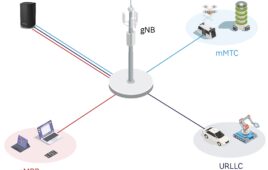The U.S. trails China and South Korea in newly released rankings of select countries’ readiness for 5G networks.
The study, commissioned by wireless industry group CTIA and conducted by research firm Analysys Mason, characterized China’s lead as “narrow” but attributed it to “both proactive government policies and industry momentum.”
The Chinese government, the report said, committed to provide at least 100 MHz of mid-band spectrum and 2 GHz of high-band spectrum to each of the country’s major wireless providers; each operator, in turn, has established launch dates for 5G service.
South Korea ranked second out of the 10 countries included in the report. The U.S. finished third, which analysts attributed to strong 5G investment levels from the domestic wireless industry.
Japan ranked fourth in the Analysys Mason study, with a gap between the top four nations and three European nations in a “second tier:” Germany, the U.K. and France. The three remaining countries — Canada, Singapore and Russia — comprised a third tier.
But the report also noted that other countries hope to catch up to the global leaders. The U.K. and European Union are updating wireless infrastructure regulations, while the U.K., Spain and Italy each plan to hold 5G spectrum auctions this year.
China’s lead in 5G systems previously drew concern from U.S. national security officials, but the industry group also pointed to the potential economic ramifications of losing the race to next-generation networks.
Recon Analytics, in a separate CTIA-commissioned study, said the U.S. victory in the race to 4G led to a nearly $100 billion increase in the nation’s GDP and an 84 percent increase in industry-related jobs.
In addition, fast 4G deployment helped the U.S. establish leading market positions in app development and other wireless and tech segments.
“When countries lose global leadership in a generation of wireless, jobs are shed and technology innovation gets exported overseas,” Recon Analytics founder Roger Entner said in a statement.
CTIA officials called on policymakers to overhaul local zoning processes, which could delay or prevent installations of small cell 5G infrastructure, as well as make more spectrum available — particularly in mid-band spectrum.
The Analysys Mason report said that by the end of 2018, the U.S. will rank sixth out of the 10 nations in the amount of vital spectrum available between 3 GHz and 24 GHz.
“The United States will not get a second chance to win the global 5G race,” said CTIA President and CEO Meredith Attwell Baker.




